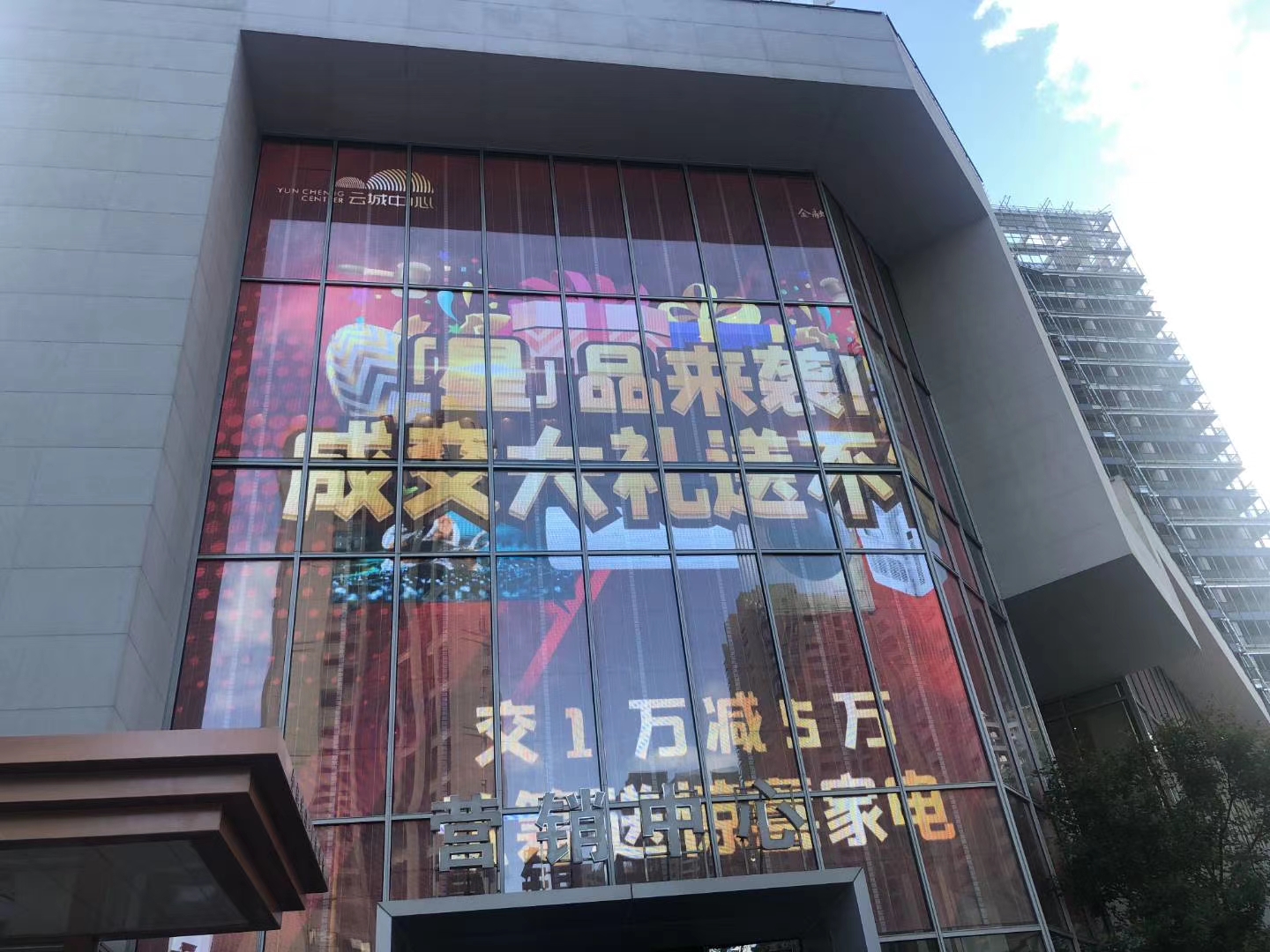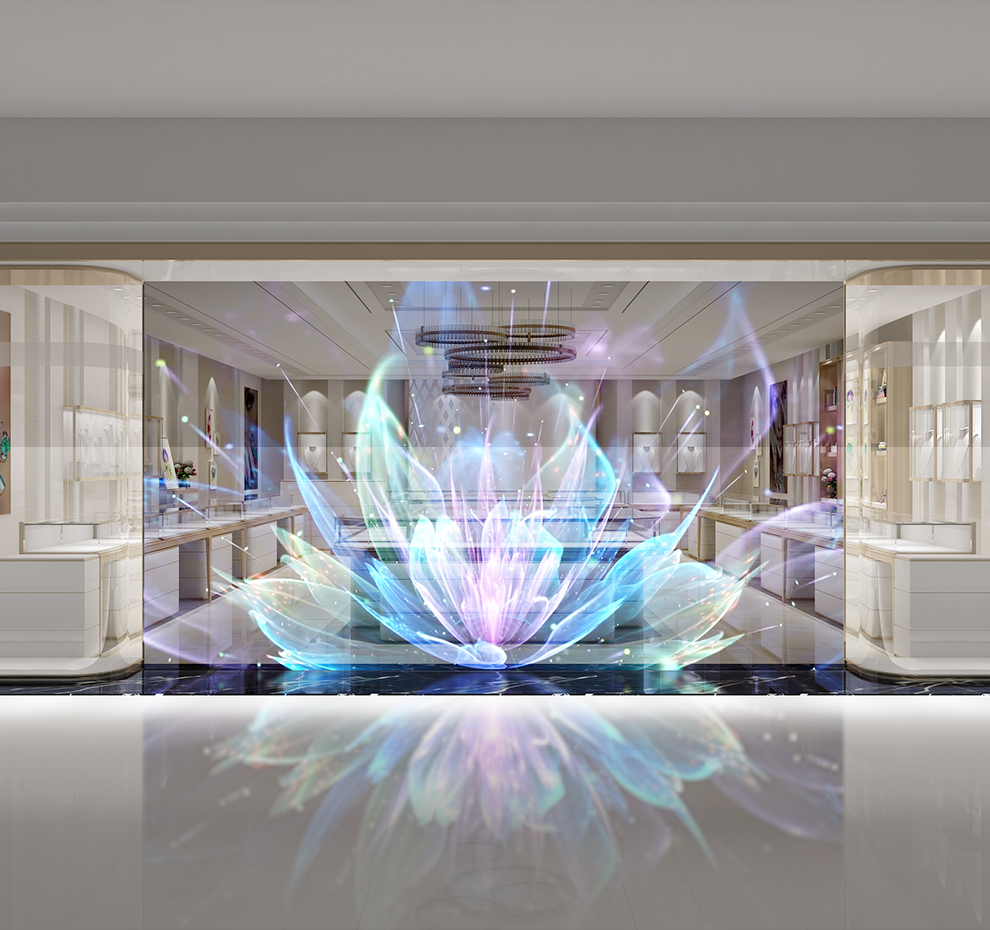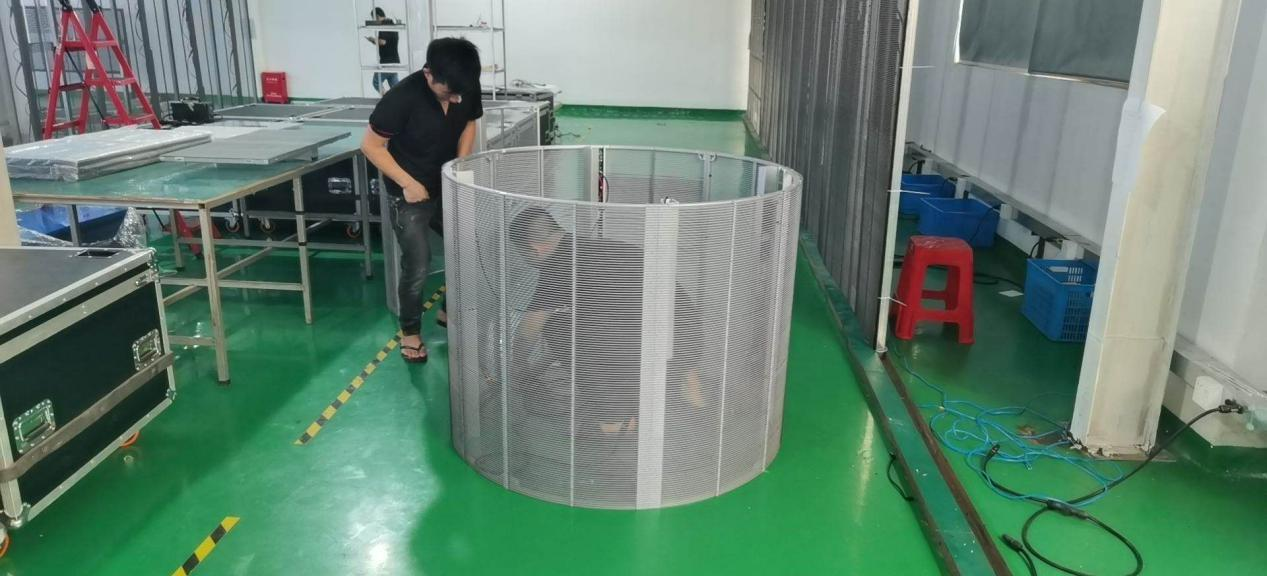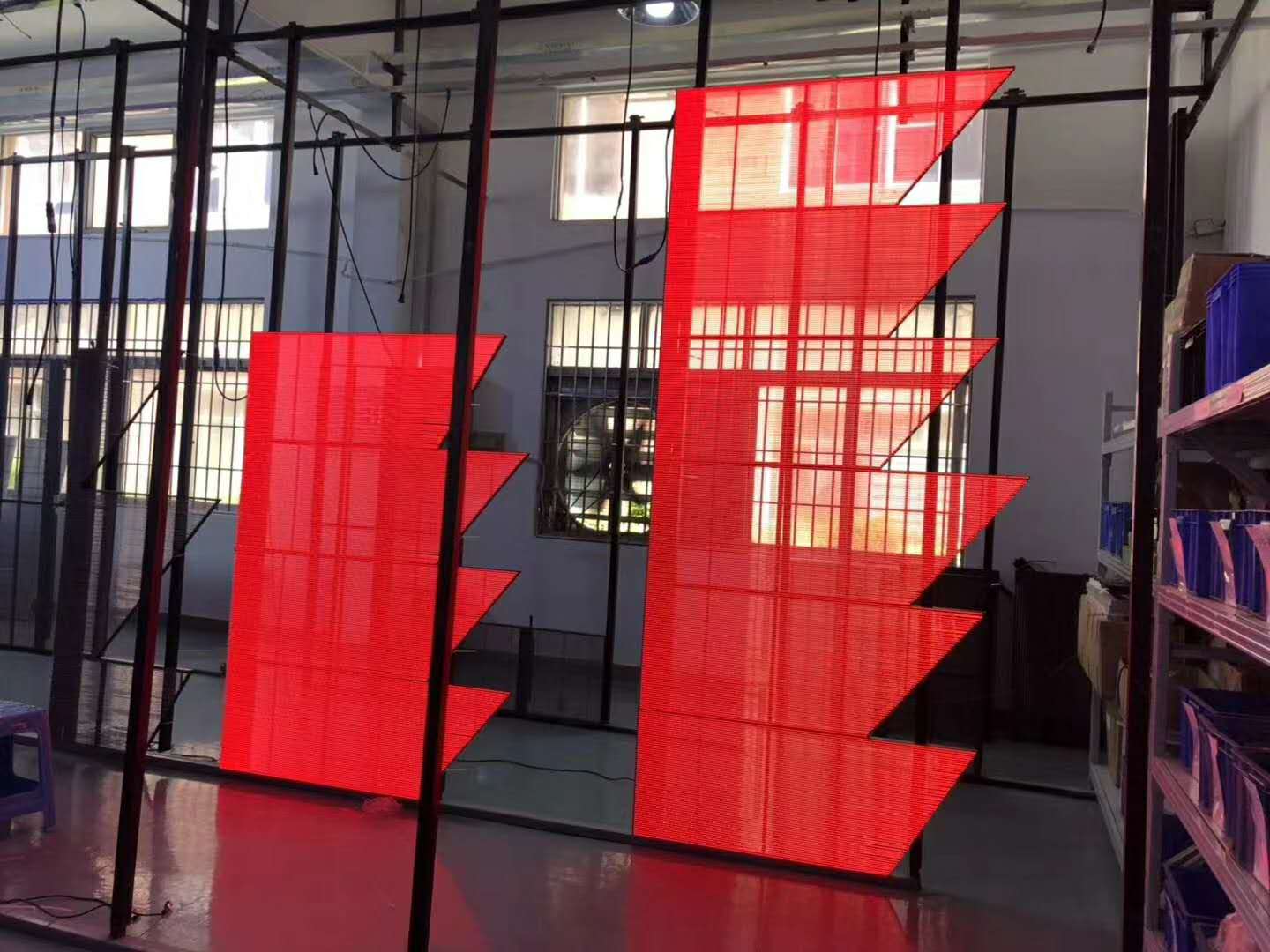Affected by Covid-19, LED transparent screen manufacturers are paying more attention to research and development, dividing transparent screen levels, assembly, and brand production effects. The invisible price war makes it difficult for assembly manufacturers to survive, and powerful manufacturers are more able to focus on developing new LED transparent screen products in the market of price fluctuations and disparities, thus standing out.
With the increase in market demand, LED transparent screen technology and products are continuously optimized, and even interactive technology has emerged, further bringing a good experience. With the continuous reduction of pixel pitch and the improvement of permeability and stability, LED transparent screens have gradually occupied the market with high-definition and transparency characteristics, and even occupy an important position in the field of glass curtain walls.
With the maturity of LED transparency, LED film screens, glass screens, and crystal film screens have become outstanding representative works, and small-spacing transparent screens have become a new direction. The development and application of these segmented transparent screen products have witnessed the rapid development of transparent screens.
Due to the gradual saturation of the conventional LED display screen market and the limitations of its use in fields such as glass curtain walls. To improve this situation, LED transparent screens have been born and have been rapidly developing since 2017, increasingly gaining market favour. At the same time, in urban planning and construction, glass window engineering buildings are more popular, which has led to the emergence of indoor LED transparent screens. To endow glass engineering buildings with fashion, colour diversity, modernity, and a sense of technology, giving people a unique expression. LED transparent screens continue to explode, with huge market potential. According to predictions, the market output value of LED transparent screens will be approximately 10 billion yuan by 2025.
In recent years, the concept of “new retail” has emerged, and LED transparent screens have played an important role in commercial retail display windows, interior decoration, building facades, and other fields, bringing huge changes to new retail. Differentiation and a sense of technology create a better shopping experience while not compromising the design of showcase windows and storefronts. Many fashion brands, cars, jewellery and other high-end products also prefer to use LED transparent screens to enhance the brand’s style. When playing promotional content, transparent backgrounds can not only increase the sense of technology. The emergence of new retail will inevitably drive the development of the commercial display market and create a certain demand for LED transparent screens.
Due to the transparent nature of LED screens, their clarity is inevitably affected. How to achieve high clarity without affecting transparency is a technical challenge that needs to be overcome.
1. How to handle the grayscale caused by reducing the brightness of LED transparent screens?
When using a transparent LED screen as an indoor LED display screen, the brightness needs to be reduced, otherwise, people’s eyes will not be able to bear watching for a long time. However, as the brightness decreases, the image will have a significant loss of grayscale. As the brightness further decreases, the loss of grayscale becomes more and more severe. We know that the higher the grayscale level, the richer the colours displayed on a transparent screen, and the more delicate and full the image.
The solution for reducing the brightness of LED transparent screens without affecting grayscale: The screen body brightness is suitable for environmental brightness and can be automatically adjusted. Avoid the impact of excessively bright or dark environments to ensure normal image quality. At the same time, high grayscale screens are used, and the current grayscale level can reach 16bit.
2. Solve the damage caused by LED transparent screen to improve clarity
The higher the clarity of the LED transparent screen and the richer the details of the image, the more LED beads within a single module will increase and only become more densely distributed. The general standard for the damage rate of LED display screen lights is to control it within 3/10000, but for small model LED transparent screens, the damage rate of 3/10000 lights cannot meet the needs of daily use. For example, the P3 model LED transparent screen has more than 110000 light beads per square meter. Assuming a screen area of 4 square meters, the number of damaged lights will be 11 * 3 * 4=132, which will bring an unfriendly viewing experience to the normal screen display.
The damage to the lamp is usually due to the loose welding of the lamp beads. On the one hand, it is due to the poor production process of the LED transparent screen manufacturer, and also due to quality inspection issues. Of course, the problem of the lamp beads cannot be ruled out. So it is necessary to follow the formal quality inspection process to control the quality of raw materials while monitoring the production process in place. Before leaving the factory, it is necessary to conduct a 72-hour test to troubleshoot any damage to the lights and ensure that they are qualified products before shipment.
3. Standardization or customization?
The major issue with LED transparent screens at present is customization. There are many customized products in the market, and the production cycle of customized products is relatively long, including the R&D process. They are not as fast as currently mature products and are difficult to produce in large quantities. In addition, as is well known, the side-emitting LED beads used for LED transparent displays in the market are not universal, with poor consistency and stability, resulting in high production costs, low yield, and troublesome after-sales service.
There is another important reason currently hindering the development of LED transparent screens – high maintenance costs. Almost all LED transparent screen products are used for large-scale engineering projects, and the difficulty of maintenance is evident. Therefore, the standardized production and service construction of LED transparent screens has been put on the agenda and implemented by some large factories. In the future, more standardized transparent screen products may enter non-specialized application sites.
4. Precautions for selecting brightness of the LED transparent screen
In the field of energy conservation and environmental protection, LED transparent screen manufacturers have greatly improved the power consumption of the screen. By using LED emitting chips with higher luminous efficiency and ensuring that there are no cutting corners or efficient switching power supply, the efficiency of power conversion has been greatly improved. They have also adopted well-designed panel heat dissipation to reduce fan power consumption, scientifically designed the overall circuit scheme, and reduced the power consumption of internal circuits according to changes in the external environment, Brightness can be automatically adjusted to achieve better energy savings.
The luminescent materials used in LED transparent screens have the effect of energy conservation and low consumption. However, considering their application in scenes with large display areas, if used for a long time, the overall power consumption will still be relatively high, and the electricity bills borne by advertisers will also show a geometric increase. Therefore, how to achieve energy conservation is a problem that all LED transparent screen manufacturers need to consider.
Post time: Jun-02-2023









